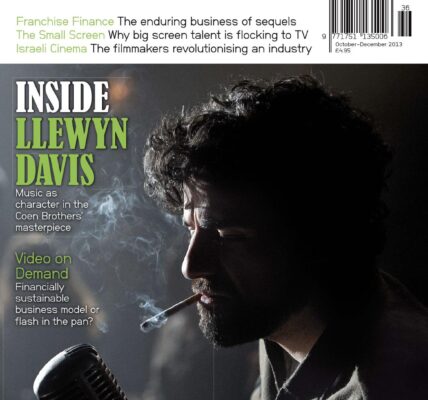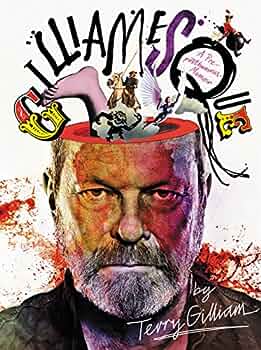Digital Dividend – Why the digital revolution has yet to benefit independent film – movieScope
The ‘digital dividend’ was the great promise of the post-celluloid era. Lower costs in production, distribution and marketing would go with greater quality and choice of content; less spending, more income.
The independent industry was hoping that lower entry costs, direct access to consumers and more programming flexibility would to some extent close the gap with Hollywood, if not exactly level the playing field.
The win-win, however, naturally had to begin with pay-pay.
The financial arrangement favoured for sharing the installation costs between distributors and theatres (the virtual print fee) effectively deferred many benefits, locking in the old economics for up to a decade. The hybrid period of 35mm and digital also eats up most gains and there are still no viable plans for the conversion of a significant percentage of smaller cinemas. But, over the last year or so, most advanced countries have gone past the tipping point, with 50,000 screens now converted. We are now clearly in the digital era, with the extinction of 35mm as a mainstream business likely within a few short years. This looks like a good time to assess the progress of the digital dividend.
The major tangible success has been 3D, creating a revenue boom even at a time of economic downturn. It is this dividend that has accelerated the acceleration in cinema conversions, and which has so far justified those ‘if you build it, they will come’ optimists, who said that consumers would be willing to pay for a renewed product with its extra dimension.
There are too many films fighting for too little space, while digital has been eating away at DVD revenues without delivering too much in alternative digital returns.
The caveat that growing revenues have not been matched by a corresponding increase in admissions still stands but, even then, it is important to have a sense of perspective. In the UK, for example, admissions of 169m in 2010 were down on the previous year, but that still represented the fourth best performance in 40 years. It is easy to forget that 30 years ago admissions had fallen below 100m, hitting the bottom in 1984 with just 54m.
Sceptics are on firmer ground in pointing out that 2011—and particularly the summer—will be a very hard act to follow. A number of key franchises, most obviously Harry Potter, have reached the end of the road with no obvious immediate successor. In the UK, the summer of 2011 had just the right mix of disappointing weather and a squeeze on the household purse that led to an increase in ‘staycations’. The next Olympic year won’t be so easy.
Hollywood generally finds a way to impose its will through sheer size, although there is little room for complacency; look at how the digital era has affected the big names in music. Yet in the independent sector the promised digital dividend looks less rosy. There are too many films fighting for too little space, while digital has been eating away at DVD revenues without delivering too much in alternative digital returns. Without the necessary infrastructure, digital cinema is not yet in a position to deliver the click-of-a-button responsiveness to programming, nor a huge increase in programming choice. It has been very good at making sure that the 3D blockbusters get maximum space, and has also opened up opportunities for remastered classics and non-film content—all putting the squeeze on specialised film.
The enormous success of the likes of The King’s Speech and The Inbetweeners Movie prove that huge opportunities exist in counter-programming Hollywood’s behemoths.
There are more radical voices, who believe that specialised and art-house film need to cut the umbilical cord with theatrical, centering releases on new digital formats.
There are clearly major issues to be resolved; not least because in Europe, tax breaks and subsidies are so tied into the theatrical-centric system. This year has seen some concerted effort to bring some transparency and discipline to these new areas. (Jon Reiss and Sheri Candler’s new book Selling Your Film Without Selling Your Soul is a valuable contribution to the debate.)
But those who believe the big screen can retain a central role should look to digital dividends that were not originally envisaged.
A good starting point is, ironically, opera.
In the last couple of years, opera from New York—and indeed ballet from Moscow and theatre from London—has been packing out cinemas at premium prices. The ‘alternative content’ sideline has become a serious moneymaker for some theatres, and the reasons for the success of opera in cinemas are instructive.
Attempts to bring opera to cinema have rarely hit the top notes. Kenneth Branagh’s 2006 film of Mozart’s Magic Flute was a box-office flop that never broke into the US market and, although Franco Zeffirelli made more impact with glossy versions of La Traviata and Otello in the 1980s, it’s fair to say that what we are seeing today is that opera works better in cinemas on its own terms, rather than as film.
It is clear that opera in cinemas has found its audience: those who enjoy the sense of occasion that comes with a live event, and who are willing to pay for the privilege. The Internet has helped by creating an appetite for the buzz performances, whether at home or the other side of the world.
There needs to be some of that sense of occasion around film, and it can be done. We can see it in the success of Secret Cinema, or at live orchestra reworkings of silent masterpieces, such as Adrian Utley and Will Gregory’s The Passion of Joan of Arc or screenings at outdoor festivals, such as All Tomorrow’s Parties.
The best cinemas also create the sense of occasion but we remain in the foothills here. The huge buzz that comes from film festivals surely represents cinema’s biggest opportunity—imagine the Cannes competition films as one-off live events—and yet is underexploited.
One of the factors that may influence change is new forms of exhibition. We tend to see change through the prism of its effect on existing business, yet among the stories over the next year will be moves to show films in new venues. The industry standard governing D-cinema projection—the so-called DCI specification—both drives up costs and limits new business but low-cost projection of high quality is now more than possible and some distributors are taking an active interest.
Alternative content will be a driver for this movement and film should ensure it doesn’t miss out. We need to shift the focus from the digital dividend that changed processes to the digital dividend for audiences, which will be key for the future of film.•












